A violent eviction occurred only three months after La Puya celebrated its second anniversary of a round-the-clock peaceful protest at the Tambor mine entrance in Guatemala.
May 23, 2014: Over 300 anti-riot police approach the Tambor gold mine entrance in San Jose del Golfo, propelling tear gas canisters towards the courageous environmental defenders that make up La Puya – a peaceful human blockade at the mine entrance.
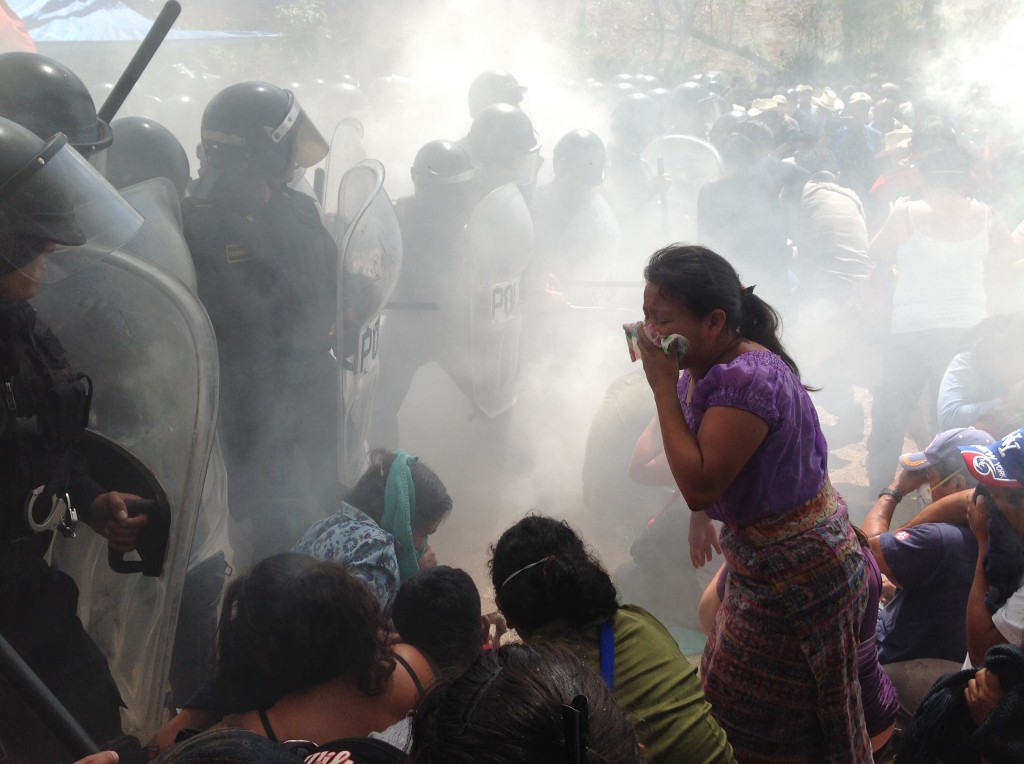
“Yes to life, no to mining” chant the women on their knees at the frontlines, praying and singing in an attempt to stop the violence, but without success. Police launch tear gas canisters at the unarmed crowd and remove the protesters by force to make way for the mining machinery.
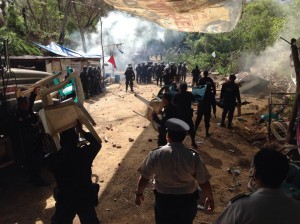
By the end of the day, La Puya encampment had been dismantled.
The controversial Tambor project started in 2000, when Canadian mining company Radius Gold began exploration of the Tambor Mountains. Located between the communities of San José del Golfo and San Pedro Ayampuc, the mountains are settled by both indigenous and non-indigenous families whose lives and livelihoods depend on the land and already-scarce water for subsistence. Without the consent of local residents, the Guatemalan government granted the company permission to build a mine and extract ore in February 2012.
On March 1, 2012, one act of civil disobedience set into motion a peaceful social movement against the Tambor project. Estella Reyes, concerned with the sudden arrival of mining machinery, parked her car across the road to the mining site, blocking trucks from entering. Supporters amassed to join her in solidarity, creating a human blockade that would hold vigil for 24 hours a day, 7 days a week over the next two years. This stand against the Tambor mine became known as La Puya, a peaceful, community-based resistance movement defending their communities against mining. In August 2012, Radius Gold sold its ownership of the Tambor project to the US company Kappes, Cassiday and Associates (KCA) – a sale that many interpret to have been spurred by the local conflict and controversy over the mine.
March 2nd of this year marked the second anniversary of La Puya’s non-violent protest and success in preventing machinery from entering the mine site. The two-year period had been one of the longest successful standoffs with a mining corporation in preventing mining activities in the region.
Throughout the two years, members of the resistance at La Puya faced attacks, intimidation, and threats, but remained steadfast in their peaceful protest. Yolanda Oqueli, mother and community leader who had already survived an attempted assassination against her on June 13, 2010, has become the face of La Puya and refuses to be cowed by intimidation and force. She maintains that, “if something happens to one of us, it happens to all of us.”
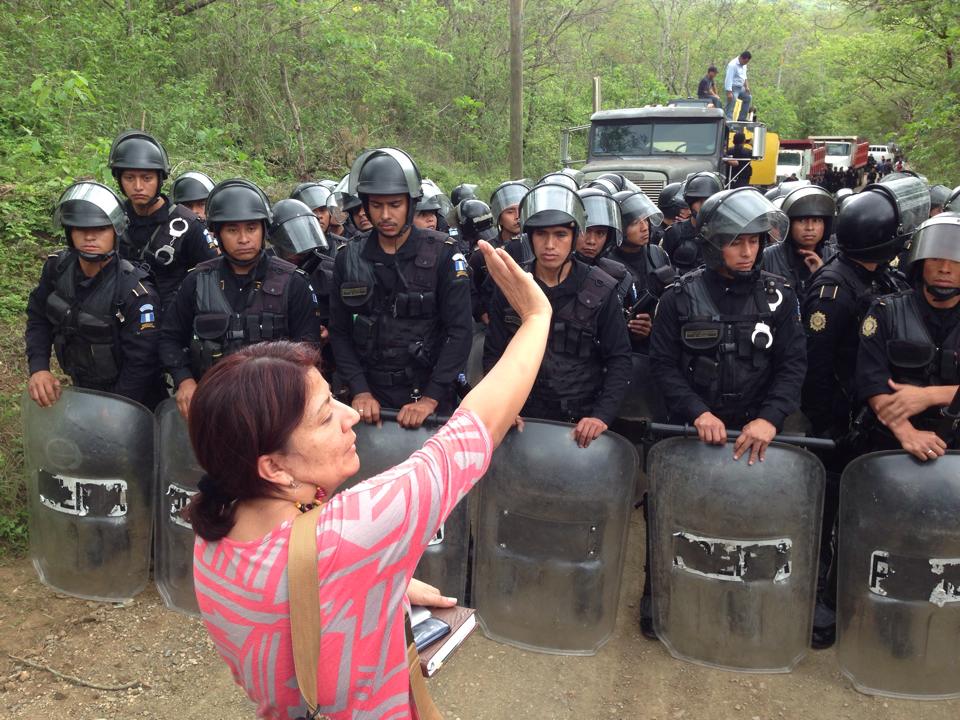
The blockade of the Tambor mine ended abruptly on May 23, when the area erupted in violent confrontation. Hundreds of riot police were sent to remove community members and force passage for the mining equipment. Tear gas and flash bombs were thrown directly into the crowd without discrimination, targeting young and old, women and children. Those who refused to move were beaten. The eviction left 20 community members injured and 7 hospitalized.
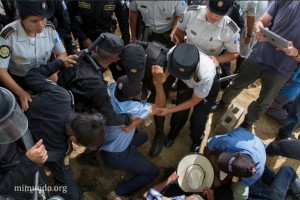
Dialogue had been underway in the days leading up to the eviction, but ended in part because the government refused to allow the talks be recorded to ensure transparency. Delivery of mining equipment to the site began during the eviction and continued in the days after.
Despite the recent event, La Puya’s spirit and resolve remain unbroken. Protestors regrouped the following day, and they held a mass for those injured in the eviction on the following Sunday. National and international organizations are working to provide support for the protestors, in part by providing the community with letters of solidarity. La Puya has already stated that the camp will be rebuilt, and their resistance will continue. Community leader Oqueli provided a message of hope in an interview with Radio Mundo Real following the eviction, “We will keep standing; the fight is not over and is stronger than ever. Yesterday there was a caravan with over 1,200 people from San José del Golfo to join La Puya. Their actions make us stronger.”
Join the Network in Solidarity with the People of Guatemala and the Guatemala Human Rights Commission to take action TODAY: Urge KCA and Radius Gold to halt all mining activities until the dialogue process has concluded between the Guatemalan government and the communities of La Puya, and to cease any pressure on Guatemalan authorities to use violent force against the protesters.
Show your solidarity with the peaceful protesters of La Puya. Join the urgent action campaign NOW!
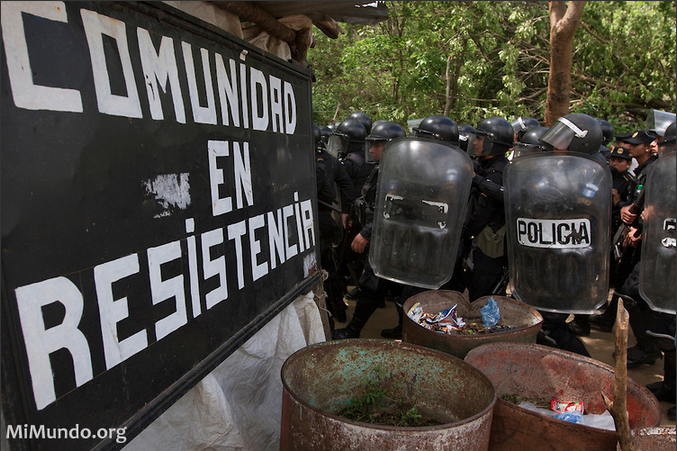
Originally posted on July 1, 2014.
